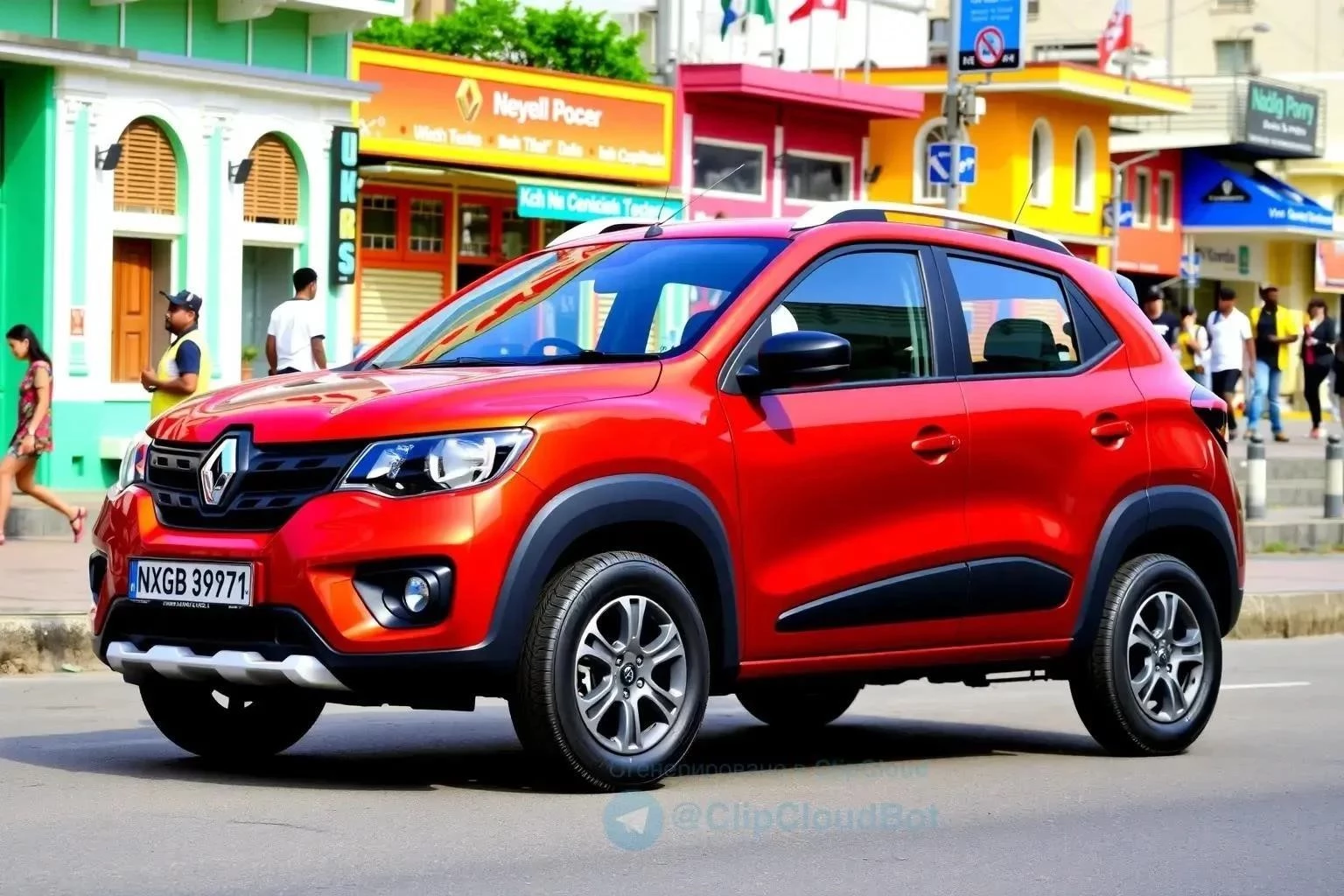The Renault Kwid, a popular entry-level hatchback known for its affordability and fuel efficiency, is reportedly set to expand its lineup with the introduction of three new models. This strategic move aims to further solidify Renault’s position in the competitive Indian automotive market and cater to a wider range of customer preferences. These additions are expected to bring fresh design elements, enhanced features, and potentially even alternative powertrain options to the Kwid family. The expansion signals Renault’s commitment to innovation and its belief in the continued success of the Kwid platform. Let’s delve into what we might expect from these exciting new additions.
Exploring the Potential of New Renault Kwid Models
While official details remain scarce, speculation is rife regarding the nature of these upcoming Kwid variants. Several possibilities exist, ranging from cosmetic upgrades to significant mechanical alterations.
Possible Kwid Facelift and Feature Enhancements
One likely scenario is a mid-life facelift for the existing Kwid model. This could involve:
- Revised front and rear fascias with updated styling cues.
- New alloy wheel designs.
- Interior upgrades, including a redesigned dashboard and improved upholstery.
- Addition of new features such as a larger touchscreen infotainment system, connected car technology, and enhanced safety equipment.
A Kwid-Based Micro-SUV: A Bold Move?
Another intriguing possibility is the development of a micro-SUV based on the Kwid platform. This would capitalize on the growing demand for SUVs in the Indian market. Key features could include:
- Increased ground clearance for improved off-road capability.
- Rugged styling elements, such as body cladding and skid plates.
- Potentially a more powerful engine option.
Electric Kwid: Embracing the Future of Mobility
Perhaps the most exciting prospect is the introduction of an all-electric Kwid. This would align with Renault’s global electrification strategy and cater to the growing demand for electric vehicles in India. Key considerations for an electric Kwid would include:
- A competitive driving range to address range anxiety concerns.
- Affordable pricing to make it accessible to a wider audience.
- A robust charging infrastructure to support electric vehicle adoption.
The electric Kwid could potentially be a game-changer in the entry-level EV segment, offering a practical and affordable electric mobility solution.
Challenges and Opportunities for the Electric Kwid
Introducing an electric Kwid would present both challenges and opportunities for Renault. The challenges include:
- Managing battery costs to keep the price competitive.
- Developing a reliable charging infrastructure.
- Educating consumers about the benefits of electric vehicles.
However, the opportunities are significant, including:
- Establishing Renault as a leader in the electric vehicle segment.
- Attracting environmentally conscious customers.
- Benefiting from government incentives for electric vehicle manufacturing and adoption.
FAQ: Renault Kwid New Models
When are the new Renault Kwid models expected to launch?
Currently, there is no official launch date. However, industry experts anticipate announcements within the next year or two.
What will be the price range of the new Kwid models?
Pricing will depend on the specific model and its features. The facelifted Kwid is expected to be priced similarly to the current model, while the micro-SUV and electric Kwid could command a premium.
Will the new Kwid models be available in all variants?
Availability of specific variants will likely vary depending on the model. Renault will likely offer a range of trim levels to cater to different customer preferences.
Where can I find more information about the new Kwid models?
Keep an eye on Renault’s official website and reputable automotive news sources for the latest updates and announcements.
Impact of New Kwid Models on Market Competition
The introduction of these prospective Renault Kwid variants is poised to significantly impact the competitive landscape of the Indian automotive market. The existing Kwid has already established a strong foothold in the entry-level hatchback segment, and these new models are anticipated to further augment Renault’s market share. The potential micro-SUV variant could directly challenge established players in the burgeoning sub-compact SUV category, while the electric Kwid could pioneer the affordable EV segment, potentially disrupting the dominance of existing electric vehicle manufacturers.
Strategic Implications for Renault India
This expansion strategy carries significant strategic implications for Renault India. By diversifying the Kwid lineup, Renault aims to:
- Enhance brand appeal and attract a broader customer base.
- Increase sales volume and market share.
- Strengthen its position as a key player in the Indian automotive industry.
- Demonstrate its commitment to innovation and sustainable mobility.
The success of this strategy will depend on Renault’s ability to effectively manage production costs, maintain competitive pricing, and deliver vehicles that meet the evolving needs and expectations of Indian consumers.
The prospect of three new Renault Kwid models represents a significant development in the Indian automotive market. Whether it’s a facelifted version with enhanced features, a rugged micro-SUV, or a groundbreaking electric variant, these additions have the potential to reshape the entry-level segment and contribute to Renault’s long-term success in India. The coming months will be crucial as Renault unveils further details and prepares to launch these exciting new models, promising a dynamic and competitive future for the Renault Kwid.
Final Thoughts on the Kwid’s Evolution
The Renault Kwid’s journey from a budget-friendly hatchback to a potential multi-faceted lineup underscores the evolving dynamics of the Indian automotive market. The anticipated new models reflect a strategic response to changing consumer preferences, technological advancements, and the growing emphasis on sustainable mobility. As Renault prepares to unveil these additions, the automotive industry and consumers alike eagerly await the next chapter in the Kwid’s success story.
The Renault Kwid, a vehicle that has carved a niche for itself in the Indian automotive market with its distinctive styling and competitive pricing, is reportedly poised for a significant expansion. Rumors suggest the imminent arrival of not one, but three new models based on the Kwid platform. These potential additions include a facelifted version with updated features, a micro-SUV variant catering to the growing demand for compact SUVs, and an all-electric model aligning with the global shift towards electric mobility. This strategic move by Renault signals a commitment to innovation and a desire to further solidify its presence in the highly competitive Indian market. The introduction of these models could redefine the entry-level segment and offer consumers a wider range of choices within the Kwid family.
Facelifted Kwid: Enhancements and Refinements
The first anticipated addition is a facelifted version of the existing Renault Kwid. This refresh is expected to incorporate several key improvements, including:
- Revised exterior styling, potentially drawing inspiration from Renault’s global design language.
- Upgraded interior with improved materials and ergonomics.
- Addition of new features such as a larger touchscreen infotainment system, connected car technology, and enhanced safety equipment.
Another intriguing possibility is the development of a micro-SUV based on the Kwid platform. This would capitalize on the growing demand for SUVs in the Indian market. Key features could include:
- Increased ground clearance for improved off-road capability.
- Rugged styling elements, such as body cladding and skid plates.
- Potentially a more powerful engine option.
Perhaps the most exciting prospect is the introduction of an all-electric Kwid. This would align with Renault’s global electrification strategy and cater to the growing demand for electric vehicles in India. Key considerations for an electric Kwid would include:
- A competitive driving range to address range anxiety concerns.
- Affordable pricing to make it accessible to a wider audience.
- A robust charging infrastructure to support electric vehicle adoption.
The electric Kwid could potentially be a game-changer in the entry-level EV segment, offering a practical and affordable electric mobility solution.
Introducing an electric Kwid would present both challenges and opportunities for Renault. The challenges include:
- Managing battery costs to keep the price competitive.
- Developing a reliable charging infrastructure.
- Educating consumers about the benefits of electric vehicles;
However, the opportunities are significant, including:
- Establishing Renault as a leader in the electric vehicle segment.
- Attracting environmentally conscious customers.
- Benefiting from government incentives for electric vehicle manufacturing and adoption.
Currently, there is no official launch date. However, industry experts anticipate announcements within the next year or two.
Pricing will depend on the specific model and its features. The facelifted Kwid is expected to be priced similarly to the current model, while the micro-SUV and electric Kwid could command a premium.
Availability of specific variants will likely vary depending on the model. Renault will likely offer a range of trim levels to cater to different customer preferences.
Keep an eye on Renault’s official website and reputable automotive news sources for the latest updates and announcements.
The introduction of these prospective Renault Kwid variants is poised to significantly impact the competitive landscape of the Indian automotive market. The existing Kwid has already established a strong foothold in the entry-level hatchback segment, and these new models are anticipated to further augment Renault’s market share. The potential micro-SUV variant could directly challenge established players in the burgeoning sub-compact SUV category, while the electric Kwid could pioneer the affordable EV segment, potentially disrupting the dominance of existing electric vehicle manufacturers.
This expansion strategy carries significant strategic implications for Renault India. By diversifying the Kwid lineup, Renault aims to:
- Enhance brand appeal and attract a broader customer base.
- Increase sales volume and market share.
- Strengthen its position as a key player in the Indian automotive industry.
- Demonstrate its commitment to innovation and sustainable mobility.
The success of this strategy will depend on Renault’s ability to effectively manage production costs, maintain competitive pricing, and deliver vehicles that meet the evolving needs and expectations of Indian consumers.
The prospect of three new Renault Kwid models represents a significant development in the Indian automotive market. Whether it’s a facelifted version with enhanced features, a rugged micro-SUV, or a groundbreaking electric variant, these additions have the potential to reshape the entry-level segment and contribute to Renault’s long-term success in India. The coming months will be crucial as Renault unveils further details and prepares to launch these exciting new models, promising a dynamic and competitive future for the Renault Kwid.
The Renault Kwid’s journey from a budget-friendly hatchback to a potential multi-faceted lineup underscores the evolving dynamics of the Indian automotive market. The anticipated new models reflect a strategic response to changing consumer preferences, technological advancements, and the growing emphasis on sustainable mobility. As Renault prepares to unveil these additions, the automotive industry and consumers alike eagerly await the next chapter in the Kwid’s success story.
Analyzing the Potential Kwid Model Specifications
While official specifications remain undisclosed, informed speculation allows for a reasonable projection of the potential characteristics of each Kwid variant. The facelifted Kwid is likely to retain the existing 0.8-liter and 1.0-liter petrol engine options, albeit with potential refinements to improve fuel efficiency and reduce emissions. The micro-SUV variant, to effectively compete in its segment, may necessitate a more potent engine, possibly a turbocharged version of the 1.0-liter unit, to provide adequate performance. The electric Kwid’s powertrain will undoubtedly be the subject of intense scrutiny, with consumers keenly observing the battery capacity, range, and charging time. A competitive range of at least 200 kilometers is deemed essential for widespread acceptance, coupled with fast-charging capabilities to minimize downtime.
Component Sharing and Cost Optimization
A crucial aspect of Renault’s strategy will be leveraging component sharing across the Kwid lineup to optimize production costs. Utilizing common platforms, engines, and other components can significantly reduce development and manufacturing expenses, enabling Renault to maintain competitive pricing. This approach is particularly critical for the electric Kwid, where battery costs represent a substantial portion of the overall vehicle price. Strategic sourcing and local manufacturing of key components will be paramount to achieving affordability and maximizing the vehicle’s appeal to price-sensitive Indian consumers.
The Role of Government Policies and Incentives
Government policies and incentives will play a pivotal role in shaping the success of the new Kwid models, particularly the electric variant. The Indian government has been actively promoting electric vehicle adoption through various initiatives, including subsidies, tax breaks, and the development of charging infrastructure. Continued government support will be essential to incentivize consumers to switch to electric vehicles and create a favorable ecosystem for EV manufacturing. Furthermore, policies related to vehicle safety and emissions standards will influence the design and engineering of the new Kwid models, ensuring compliance with regulatory requirements.
Consumer Perception and Brand Image
Ultimately, the success of the new Kwid models will depend on consumer perception and brand image. Renault needs to effectively communicate the value proposition of each variant, highlighting its unique features and benefits. Building trust and confidence in the brand is crucial, particularly for the electric Kwid, where consumers may have concerns about reliability and performance. Positive reviews, word-of-mouth referrals, and effective marketing campaigns will be essential to shape consumer perception and drive sales. Renault must also ensure that its after-sales service network is adequately prepared to support the new models, providing timely maintenance and repairs to maintain customer satisfaction.
Long-Term Implications for Renault’s Market Position
The introduction of these new Kwid models represents a strategic gamble for Renault, with potentially significant long-term implications for its market position in India. A successful launch could solidify Renault’s presence in the entry-level segment, expand its customer base, and establish it as a leader in the electric vehicle market. Conversely, a poorly executed launch could damage the brand’s reputation and hinder its growth prospects. The coming years will be crucial as Renault navigates the challenges and opportunities presented by this ambitious expansion strategy, shaping the future of the Kwid and Renault’s overall success in the Indian automotive landscape.
Monitoring Key Performance Indicators
To gauge the success of this expansion strategy, Renault will need to closely monitor several key performance indicators (KPIs). These include:
- Sales volume of each Kwid variant.
- Market share in the respective segments.
- Customer satisfaction ratings.
- Brand awareness and perception.
- Return on investment for the new model development.
Regularly tracking and analyzing these KPIs will enable Renault to identify areas for improvement and make informed decisions to optimize its strategy and maximize its return on investment.


